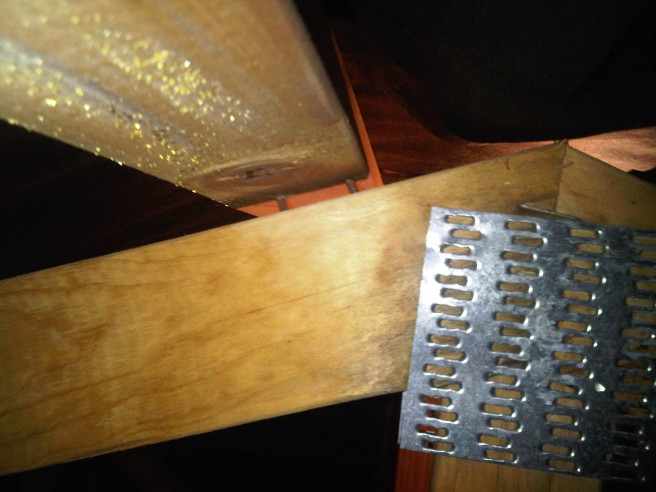Nearly all profiled metal roofs will exhibit thermal roof noise at times. Typically, this is a relatively minor and uncommon event, and attracts no attention. Sometimes, however, the frequency and/or volume of the noise can be to the point where it causes discomfort and distress to the occupants.
Thermal roof noise is caused by the roof expanding or contracting due to temperature fluctuation. The effect can be immediate as a cloud passes over the sun or delayed as the roof and roof structure cool down at night.
Not all materials in a roof structure absorb the same amount of heat, and not all materials have the same amount of thermally-induced movement. Differential movement may emanate from many places, including the layer of roofing exposed to the sun against layers underneath (i.e. a flashing or lap), the roof profile against the fastener, or the roof against the support structure. It can also happen when expansion of the roof causes one member of the support structure directly to move against another. Movement may also occur as sudden popping in the pan of a profile that releases static friction and causes sound.
The source of thermal roof noise can be difficult to identify in many cases. However, roof noise can be divided into three main categories by source. They are:
- Flashings,
- popping of pan, and
- other causes of thermal noise.
Flashings
Where flashings are solid fixed to a vertical surface and to the cladding, differential movement between them and the roof may cause noise. Using clip-fastened systems allowing flashings and roofing to move independently to each other will help minimise noise associated with this movement.
Pan Popping
Oil canning, or canning, is the term used to describe visible waviness of the pan of a metal roof. It is most noticeable in roofs with wide trays but may also occur in secret fixed or trapezoidal profiles.
Pan popping is accompanied by canning, but not all canning jobs result in thermal roof noise. Canning is most prevalent in tray profiles, but popping roof noise is most often found with trapezoidal or secret fixed roofs.
- Canning can be minimised by good rollformer tooling design and adjustment, but it can also be exacerbated by variations in mechanical properties and shape of the coil.
- Even steel coil well within standard tolerances can have characteristics that lead to high levels of canning in some profiles and tooling set-ups.
- Canning can also be induced by the building structure; a concave curve in the support structure will put the pan of the profile into compression and lead to canning.
To avoid canning problems, both the structure and the sheets should be inspected for straightness before installation.
Other Causes of Thermal Noise
Roof expansion noise can be caused by the energy released when the roof expands or shrinks relative to its support, and sliding occurs at the fasteners, clips, purlins, or within the structure itself. The exact source of most roof noise is hard to identify.
A common observation of noisy roofs is poor contact between the purlin and the rafter due to insufficient pressure being put on the purlin when installing purlin screws, allowing the purlin to ride up on the thread. It may create a source of noise as purlins rotate under thermal expansion forces. Purlin screws should have a length of unthreaded shank below the head of at least the purlin thickness.
It is impossible to prevent expansion, but its effects can be minimised.
Thermal variation can be inhibited by using lighter colours or ventilating the roof space. Lowering roof temperatures minimises thermal noise. Increasing ventilation in the ceiling cavity is the easiest way to lower roof temperatures and may have the added benefit of lowering roof space humidity.
The accumulation of stress can be minimised by avoiding excessive run lengths. Friction can be reduced by using low-friction underlay and using oversized fastener holes to allow materials to move freely. Fasteners should be checked for over-tightening and eased if necessary.
Many roof noise problems are typically associated with long, low, dark skillion roofs, but some noisy roofs have none of those design features. To date, the MRM have not recorded any instances of thermal roof noise with roofs fastened to steel purlins or frames.
Thermal roof noise is a modern problem. Although often attributed to the roof material, steel and the profiles we form it into have not changed. In one case, a noisy trapezoidal roof was replaced with a corrugated roof manufactured from imported material, and the noise problem remained.
Changes that have occurred in the industry include:
- roofs are screwed on rather than nailed,
- roofs are longer and darker,
- purlins are screw fastened not nailed,
- houses are more airtight and far better insulated,
- trusses have largely replaced rafters, and
- framing timber is lighter and younger.
It is possible that a number of these aspects contribute in complex ways to produce varying thermal expansion noise levels, but we certainly don’t want to go back to nailed roofs and uninsulated houses.
The exact source of much roof noise is still a mystery. Auckland University is currently researching a scientific approach to identifying causes and solutions to roof noise.

